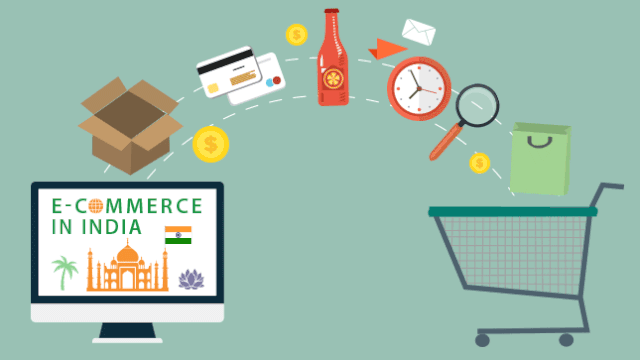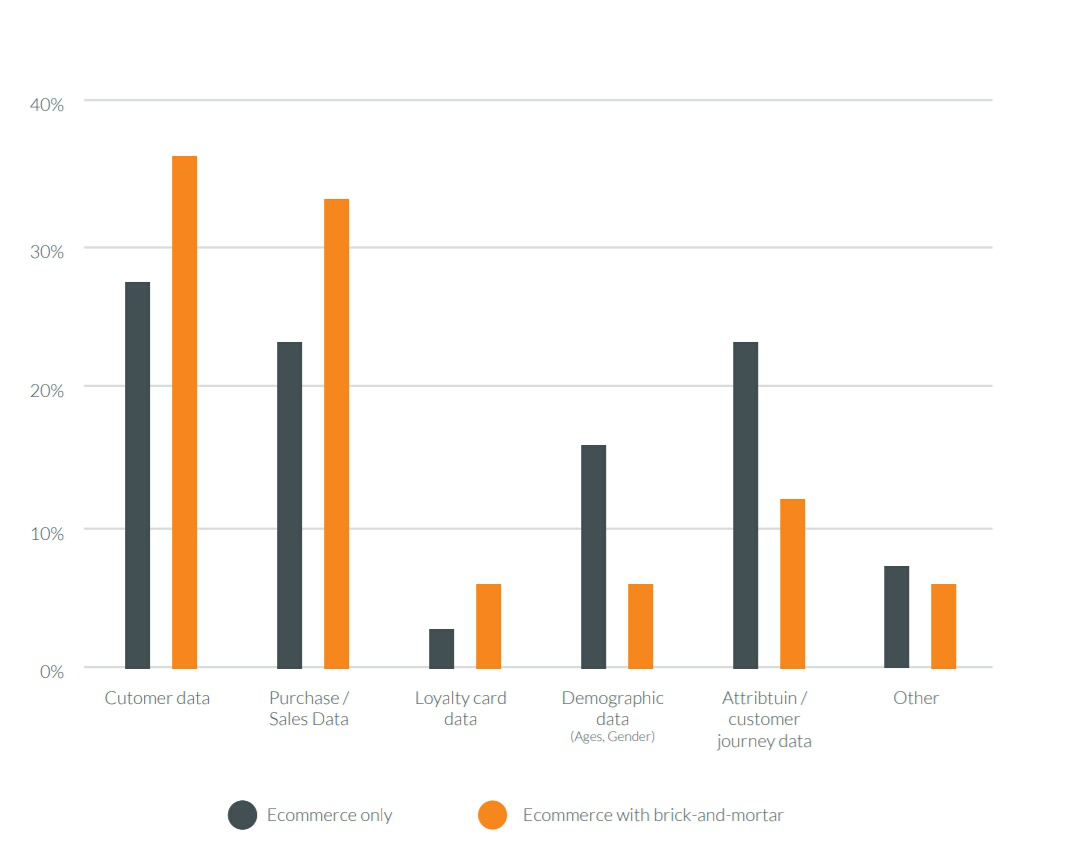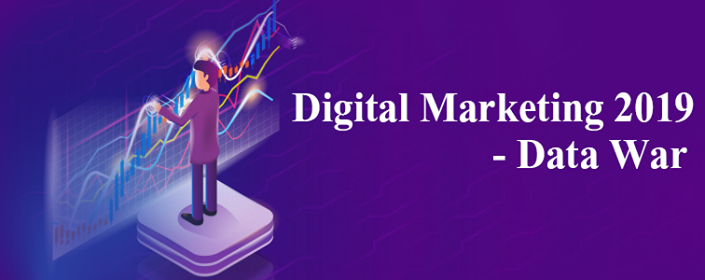The retail industry has been in existence since ages. Earlier mankind followed the barter system and then with the evolution of time and economy, this industry also kept updating.
Today, with the evolution in the digital world, the retail industry has also evolved. Ever since it’s existence, the retailers have been keeping a log of what the customers demand the most.
This practice not only saves them money by not wasting on unwanted goods but also establish a personal connection with the customers.
Greeting and meeting the needs of the customer personally has been a tradition in the retail industry. But with the emancipation of the digital era, things are changing.
Today, consumers literally have access to thousands of brands online. They analyse everything minutely before making the final purchasing decision.
And this is in one way or the other, hampering the traditional way of the retail industry.
This new trend is not only extending the arena of customers but also flooding the data. Be it an online platform or a physical one, the customer is now directly in contact with the options available.
The digital world gives them the flexibility to get in touch with the retailers through social media, emails, websites e-commerce platforms etc.
This is no doubt a step forward to establish personal contact with the customer, but it has also brought in a huge wave of data, which can be difficult to handle.

But do not worry, today we are going to discuss them…
Data war and transformation in the retail industry
Like stated earlier, it is good that things are moving towards digitization but every good move has some drawbacks.
In this case, also there are some drawbacks, that are rather making things difficult for the retailers than systemizing it.
Now that everyone is doing everything online, the algorithms record all the activities and give insights accordingly.
But the loophole here is, the last click model gives 100% credit to the last click from where the customer made the purchasing decision. And all the previous clicks that lead to the last click are ignored.
This usually misleads the retailers to make decisions as to where to spend the marketing budget. Not all data collected is refined and good data.
Let us take a look at some figures:
- 68.9% of the retailers claimed that their main aim is customer lifetime value and customer retention. However, out of this only 10 % admit of using the data collected in the right manner.
- Only 39% of the online retailers take a look at the entire customer journey and not just the last click. Whereas, 16% of the offline retailers admitted that customer journey is not a priority for them.
- 48% of the offline retailers expect an increase in the sale from the online platforms.
So, a collection of relevant and reliable data is a major challenge for retailers. Now that we know the problem, let us dive in deeper to understand…
How to overcome the changing face of the retail industry?
The world is moving fast as so are the customers. They have become smarter with every passing day.
Gone are the days, when buying groceries, home appliances and clothes, ate up your entire day and left you exhausted.

Now there are several online platforms where everything is available at one place that too with many options. Big giant Amazon can be the best example to explain this.
- According to the reports of 2018, Amazon’s retail sale alone accounted for $258.22 billion.
- 86% of the retail sale was registered by physical stores in the US.
But this definitely does not mean the end of brick and mortar retail stores. In fact,
These figures might seem disturbing, but it is true. Customers have yet not given up offline shopping, but they are inclined to online shopping as well.
This means that retailers have to now dig out a way which can be best for both online and offline shoppers.
In this scenario, both online and offline retailers should concentrate on providing solutions that will make shopping easy.
The best options to start with can be –
- Mobile application shopping facility (for both only e-commerce and brick and mortar retailers)
This option can give liberty to the customer to make shopping lists while being present in the physical store, one hour pick up arrangement, etc.
Another option can be sale through third-party platforms like Amazon. I guess there is no harm in displaying your products on Amazon, even if you have a physical shop right?
Now let us come back to the problem from where we started…
Retail data problems and their solutions
Does not matter if the retailer is operating only online or both online and offline, in both the cases it swims in a sea of data.
And it is pretty difficult to strategies this data and understand the customer journey.
Be it the purchase history in a brick and mortar shop or discarded carts online, there is always a clue to understand the customer’s mind.
Retailers can only win this data war if they know how to convert the data to actionable insights.
For example, Amazon, analyses the data based on the purchase history, location, abandoned items and then give recommendations accordingly that suits the customer’s preference.
Other retailers can also follow Amazon’s trail. To start with retailers can collect first-party data, from database and websites. Focusing mainly on the name, address, location and purchase history, loyalty card data, attribution, demographic data and customer journey.
pay attention to customer behaviour

- As per the research, only 23% and 12% of the e-commerce and brick and mortar retailers, respectively are paying attention to this.
- The figures speak that, 24.6% of the e-commerce only retailers admitted that they do not know how to use the collected data effectively.
Now the point is both e-commerce and brick and mortar retailers are collecting data. But how many are using it effectively?
In fact, the catch that most of the retailers are missing is that customers knowingly provide them relevant data, expecting the brands to use it to establish a personalised journey for them without compromising with their confidentiality.
So it is important that you map the customer’s journey right from the first day he came in contact with your brand to the last purchase decision.
This means that connecting all the dots correctly to understand what the customer is exactly looking for.
I’m ordered to do this you need to use the right tools. According to the research, the main platforms that both e-commerce only and e-commerce plus brick and mortar retailers can use to collect data are:
- Website analytics
- Social media analytics
- Google analytics

But the underlying thought is, to not analyse only the last click, but to take into account the entire customer journey.
Moving a little further, let us understand…
What marketers can learn from established brands vs e-commerce
The little secret here is to know exactly how to create personal attention with the customers.
Let me explain with an example. Suppose you visit a cafe frequently and often order your favourite coffee. Wouldn’t you feel important if the barista exactly prepares the coffee for you just the way you like it, without you having to explain him every time?
Surely, it would make me feel important and special.

This is exactly how to need to create your loyal customers so that they keep coming back only to you with a sense of trust.
This will not only build a personal long-lasting bond with your customer but also give you an advantage over your competitors who are not practising this.
Let these figures back my statement.
- 60% of loyal customers are likely to recommend the brand to others.
- 39.4% of the customers will only buy from their trusted brands, even if they have cheaper options available.
- 52.3% of customers also join special loyalty programs.
This is the little trick that both e-commerce and brick and mortar retailers should learn from the established brands – develop customer loyalty.
Now with all said and done, let me explain…
The impact of AI and analytics on the future of retail
I hope, by now you have understood the importance of not just collecting data, but using it effectively.
And obviously, it is not a single man’s work. Or for that matter not even entirely a man’s work. Because manually collecting and arranging this type of data could take ages.
But thanks to the advancement in technology especially with the coming of AI and analytical tools, things have become far easier.

I am sure the term AI or artificial intelligence is not new to you. This amazing technology reads and analyse human activities and registers the data accordingly.
So earlier when I was talking about joining the customer journey dots properly, AI can really come in handy.
With the help of this technology, you can actually understand what the customer is precisely looking for and offer him exactly that.
And of course not to forget the analytical tools which can help you gather useful insights like the demographic details, brand preferences, name, gender etc.
Now that everything is just a click away and that too with several options, customer’s expectations have changed. Especially when it comes to retail shopping and the way retailers use the data.
I am repeating it again, just so that it fits into the retailers’ mind that, customers are willingly providing information and data in the hope to get better services.
And if you fail to use this data effectively, you will be left behind in the race.
This change in the shopping pattern and customer’s attitude is being increasingly known as the ‘Amazon effect”.
This change in attitude has though increased challenges for the retailers but has also brought in the opportunity with it. The opportunity to establish brand loyalty and build long-lasting relations with customers by providing personalised services.
Remember the barista example, you got to act exactly like that. Remember each customer’s choice and preferences and provide services accordingly.
Conclusion
I would just add that the future of the retail industry lies in personalisation and responsive data.
Some pro tips for the retailers to use the data effectively:
- Connects the dots of the customer’s journey
- Build trust and transparency, while using the gathered customer data (this is very important as no customer would like if it’s personal information is being misused)
- Give special attention to maintaining the privacy of your customer data
- Identify the loopholes and apply solution-oriented strategies
- Use the data properly to build a personalised experience for each one of your customers
Try these tactics and win the data war, not just to grow but to survive in the retail industry.
Do add, feedbacks, comments, suggestions on how the war of data and transformation in the retail industry.





